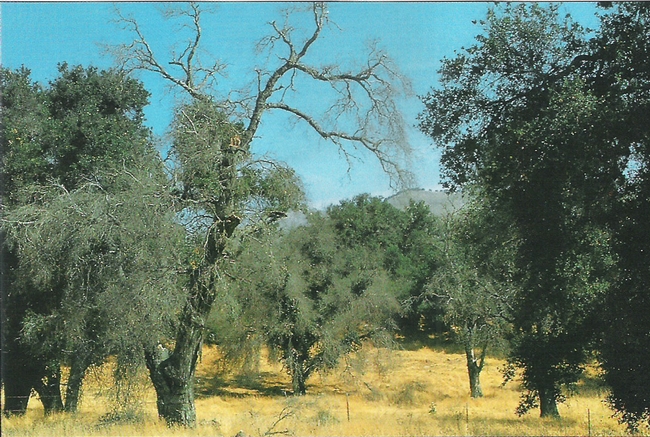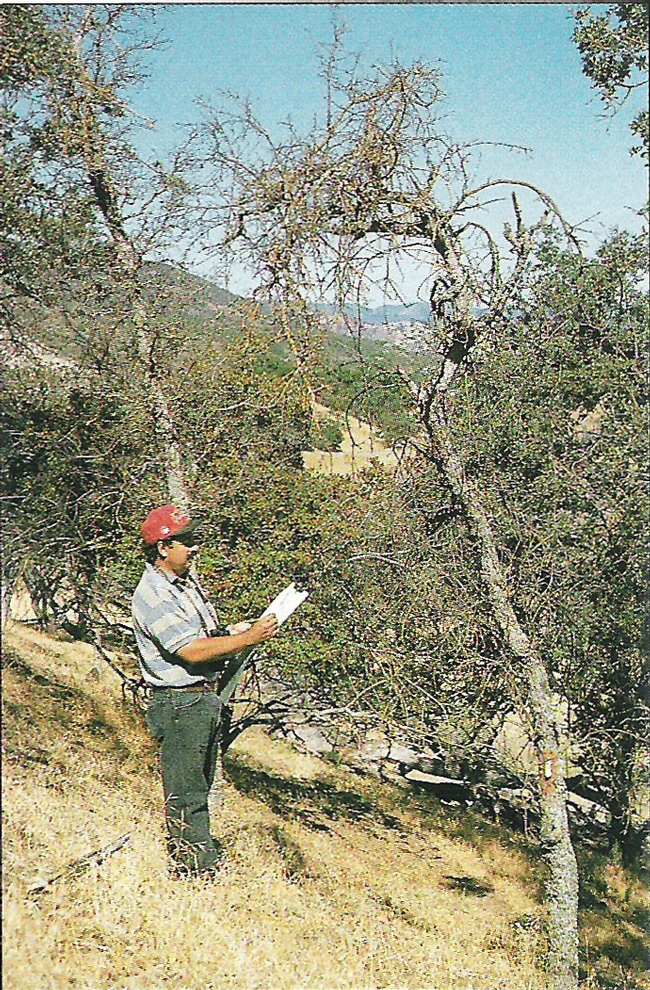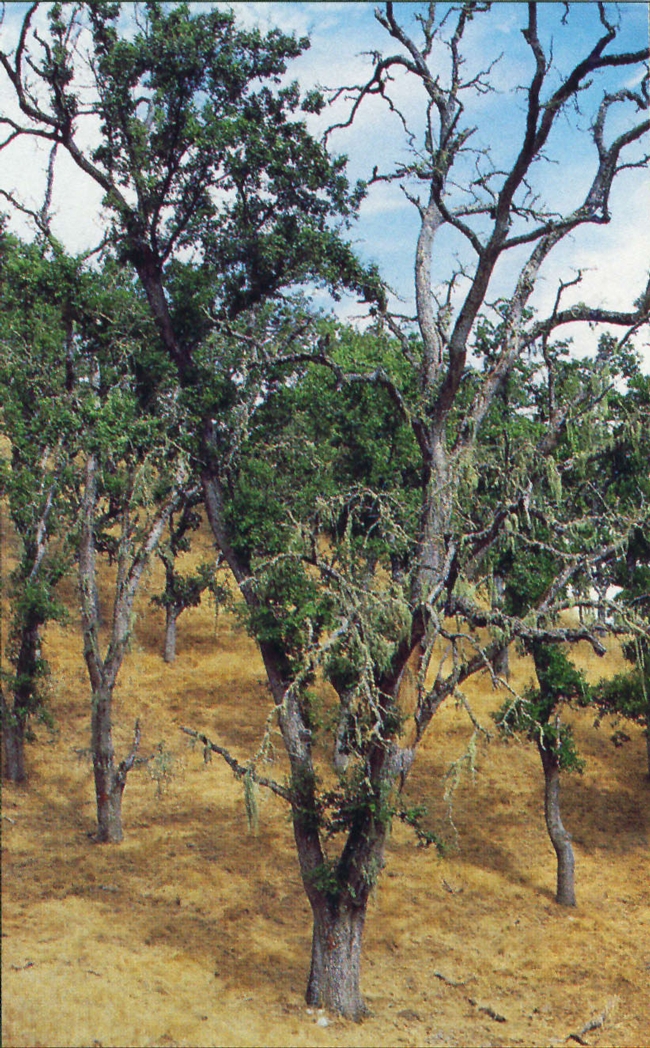Native oaks stressed by drought may recover
Bill Tietje is a UC Cooperative Extension area natural resources specialist in the Department of Environmental Science, Policy and Management at UC Berkeley. He is based in San Luis Obispo.
Early leaf drop is a deciduous tree's adaptation for conserving water that it otherwise would lose through transpiration from its leaves, which can occur as long as the leaves are green.
More recently, another deciduous oak, the valley oak, kept its brown, dead leaves longer than usual. This could be due to the virtual lack of rainfall and wind last fall and early winter, both of which typically contribute to an earlier leaf drop.
So why are these things happening?
The situation
As you know, it's dry out there! In fact, the past 12 months have been the driest on record, going back to 1870. Not surprisingly, many oaks are under water stress—and they show it.
This situation reminds one of the conditions during the drought of 1988-1990, one of the most widespread and severe droughts in the state's history. Coincidentally during that time in three counties on the Central Coast, UC Cooperative Extension was conducting a study that included the monitoring of coast live oak, blue oak, and valley oak trees on study plots scattered throughout Monterey, San Luis Obispo and Santa Barbara counties. Many of the oaks looked stressed. Some of the trees succumbed to the drought. Small oak trees in the undergrowth and on steep terrain with southern exposure, and shallow, infertile soil, were most vulnerable. Such sites are typically drier than other slopes and orientations. However, large, mature trees—or, large branches on these trees—on more gentle slopes, also died. Usually there is not only a single factor that causes the decline and mortality of oak trees. Drought stress lowers the trees' defense, making the trees more susceptible to mortality factors such as decay fungi and boring beetles. Most likely the drought caused early death of some oak trees that would have persisted otherwise.
What can be done?
Surely our native oaks have been through droughts before. So the oak trees, other than the very small or very old trees, should be okay. Nonetheless, given the very low rainfall this year it may be prudent to give a valued tree in the urban landscape a “deep watering”.
A deep watering can be accomplished by moving a hose around under the tree's canopy during the day for a day or two at a low flow or a trickle stream, such that the water percolates into the soil, not simply run down the hill. Water a few feet away from the base of the tree to avoid inviting damage from crown rot caused by the fungi Phytophthora cinnamomi. Water-saturated soil increases the chances of infection of the tree trunk.
A deep watering followed by soil drying for a month or two should not harm the tree. In fact, a deep watering may be the best recommendation for invigorating your thirsty oak tree, thus providing some insurance that the tree will survive this current drought.
I should mention that unless California receives normal or better rainfall the rest of the rainfall season, it is likely that early leaf drop will occur next summer. Remember, as suggested above, the early browning and fall of leaves does not mean that your tree will die. This is simply the tree's way of adapting to conserve water when soil moisture is low. Unless the tree is severely weakened by some other cause, it will leaf out normally the following spring.
For more information: Tietje, W., W. Weitkamp, W. Jensen, and S. Garcia. 1993. Drought takes toll on Central Coast's native oaks. California Agriculture 47(6):4-6.




